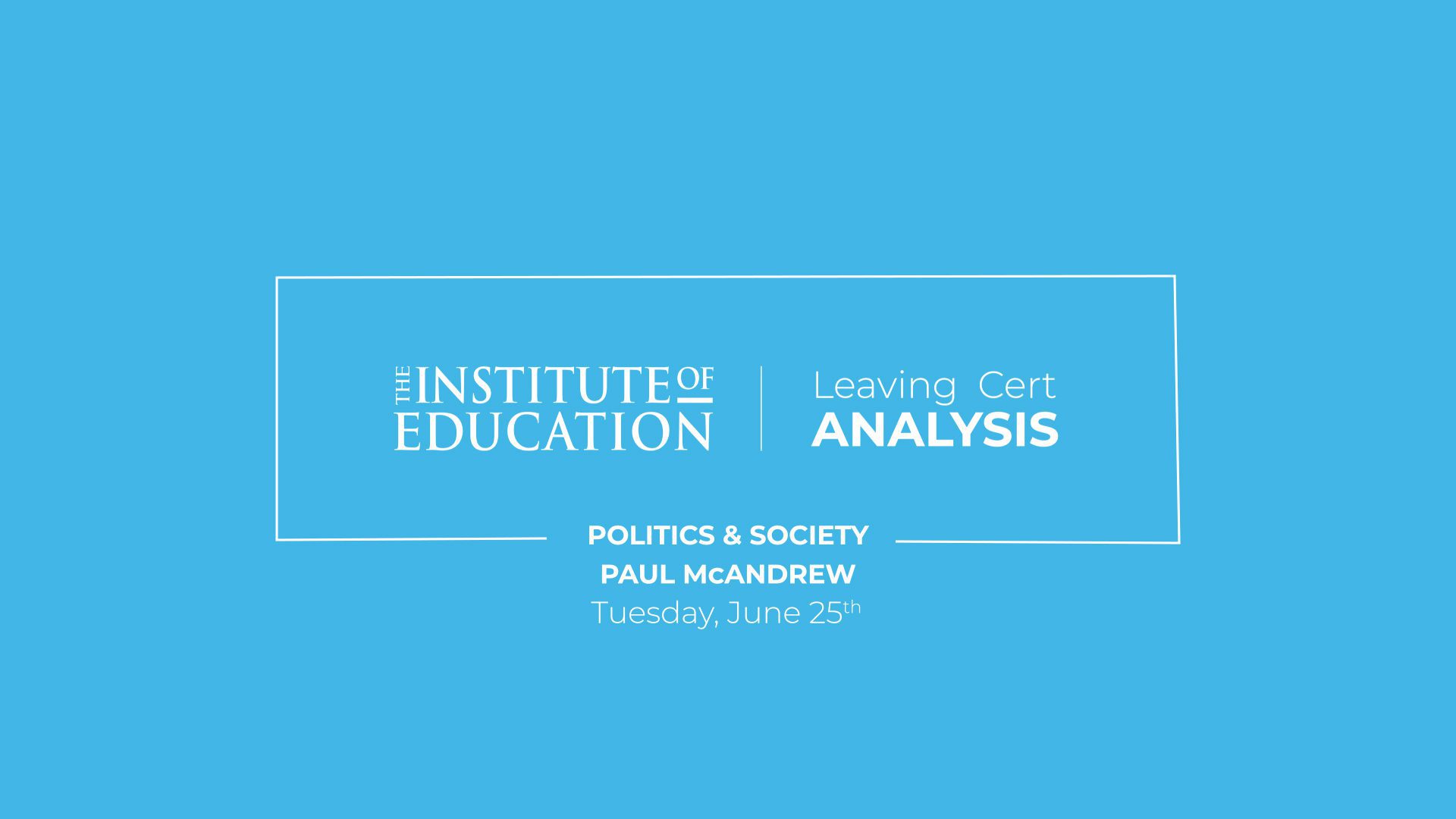Reaction to 2024 Leaving Certificate Politics & Society (Higher Level) by Paul McAndrew, Politics & Society teacher at The Institute of Education.
- Students were required to think critically about the material throughout the paper.
- The paper reflects contemporary political topics, but potentially in too lofty a manner for most students.
With lots of choice on paper, students will have been able to find something that suits their study and interests. However, there were many tricky moments that required students to both adapt their knowledge to new contexts or think beyond the particulars of the syllabus. There is a general sense on this paper that the exam setter is echoing news stories of the year. While very contemporary this means that some aspects of the questions better reflect discussion around the dinner table than the prescribed material of the course. This poses a challenge that will distinguish those looking for the very top grades from the rest.
Section A was a series of short questions covering a broad span of the course. Students had lots of choice, needing to answer only 10 of the 15 questions. This choice will have been necessary for many as some questions examined material not clearly included in the syllabus. For example, Q(g) asked “the purpose of a manifesto in party politics”, which is not something directly covered. Students could recontextualize material from discussions on the role of political parties, but this particular demand sits outside what they would have been taught to expect. Later in the same section Q(m) asked on “the relationship between Western Imperialism and Edward Said’s theory of Orientalism” and gives only four lines for a topic that you could write a book about. Being so succinct on such a big topic really requires a striking level of clarity and brevity.
The Data-Based Questions (DBQ) of Section B was a departure from previous years as both texts were taken from lobbying groups. Previously these kinds of texts were contrasted against the more objective CSO data, but here both pieces were of similar source. Both pieces had plenty of clear objective data, but students needed to be very careful in disentangling it from its interpretative context. This required a careful application of a critical thinking tool kit. The questions will be familiar to those who practiced previous DBQs but it was really essential that students avoid any kind of tangents based on personal familiarity with the topic. The central issue of female representation in politics is one that most students will have discussed and have stances on, but this could not be allowed to cloud the necessary precision for the task.
Section C’s Discursive Essays were a combination of the enticing and the challenging. Every question opened with something that would attract students but followed it with specific twist that will penalize those hoping to waffle or rant. For example, a discussion of “nationalism and/or cultural identity” is something that many students will be familiar with, but this was only examined via the lens of Thomas Hylan Eriksen’s theories, thus excluding many potential talking points and shifting towards pressure regulation in ‘overheating’ societies. Elsewhere students were asked on social media, again very familiar, but in the context of “periods of social and political unrest” which is not something normally discussed. The question on the UN will require students to connect the dots of various topics as the UN is not a sole topic itself.
This paper reaffirms the principle that the best way to succeed in this subject is to look at what is going on in society and not be too fixated on an ideology of rote learning.

